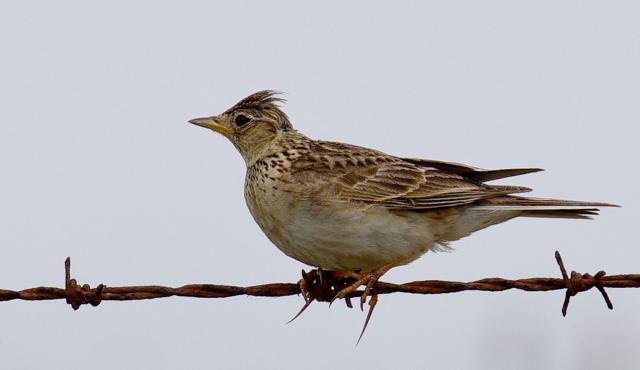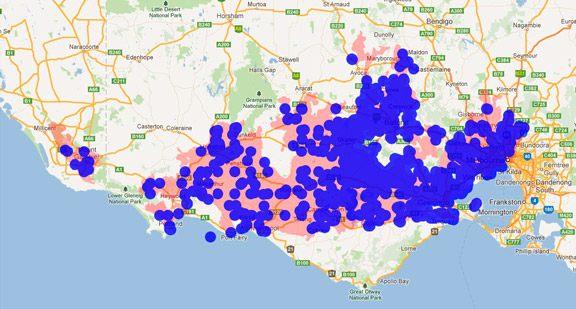A range of teacher professional learning programs will be developed to accompany the Biodiversity of the Western Volcanic Plains online outreach...

Eurasian Skylark
Alauda arvensis
Breeds September-January. Builds a grass-lined cup nest on the ground under over-hanging grass tussocks. Females incubate the eggs. Both males and females feed the young.
| Details | Description |
| Type | Bird |
| Group | Lark |
| Other Common Names | Common Skylark, English Skylark |
| Identifying Characteristics | |
| Distinctive Markings | A brown streaked bird with a cap-like crest. |
| Diet | Omnivore, feeding on invertebrates, grass shoots and seeds. |
| Habitat | Cultivated grasslands, crops, coastal dunes. |
| Native Status | Introduced |
| Sounds | Usually heard in flight, a long mellow "chirrup". |
| Taxonomy | |
| Phylum | Chordata |
| Class | Aves |
| Order | Passeriformes |
| Family | Alaudidae |
| Genus | Alauda |
| Species | arvensis |

Distribution maps indicate current and historic locations where species have been sighted.
Source: Atlas of Living Australia
| Conservation Status | |
| DEPI Advisory List | Not listed |
| FFG Act | Not listed |
| EPBC Act | Not listed |
The conservation status of species is listed within Victoria and Australia.
The Department of Environment and Primary Industry (DEPI) Advisory List consists of non-statutory advisory lists of rare or threatened flora and fauna within Victoria.
The Flora and Fauna Guarantee Act 1988 (FFG Act) lists threatened species in Victoria. Under the Act, an Action Statement is produced for each listed species.
The Environment Protection and Biodiversity Conservation Act 1999 (EPBC Act) is the Australian Government’s key piece of environmental legislation, listing nationally threatened native species and ecological communities.



